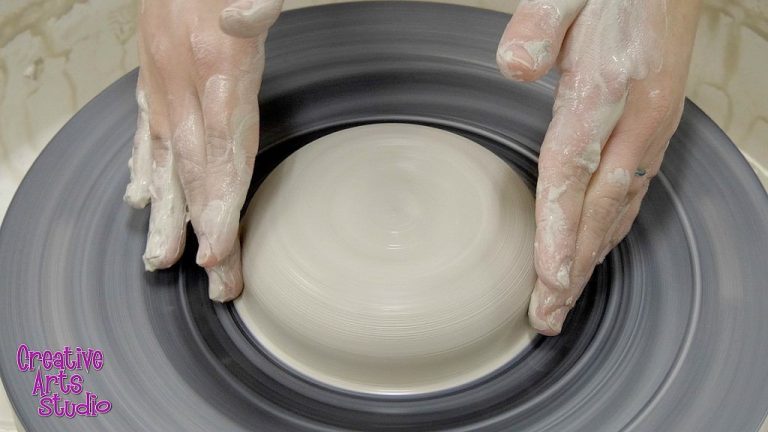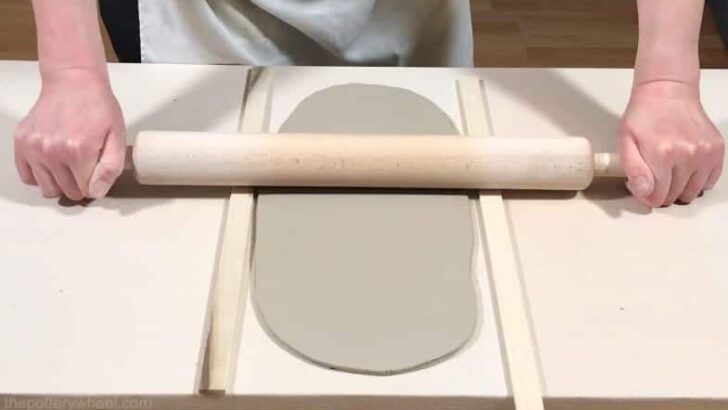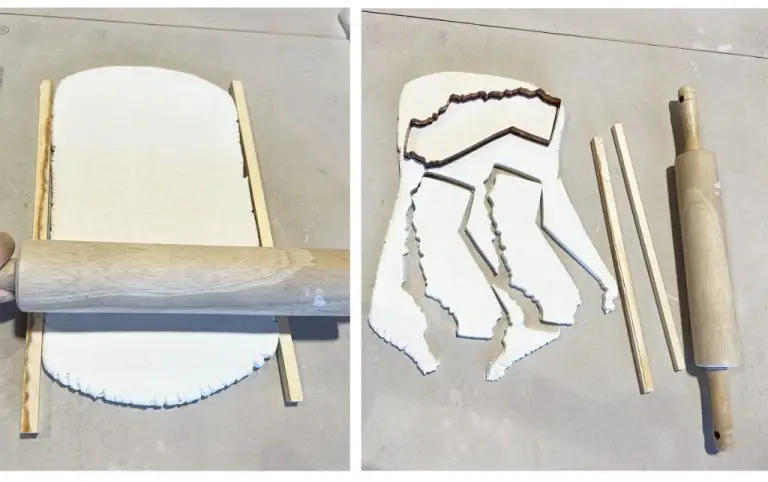What Is Mixed With Clay To Make Bricks?
Bricks have been an essential component of construction for thousands of years. This ubiquitous building material is strong and durable, providing the foundation for buildings, homes, and infrastructure across the globe. The key ingredient in brickmaking is clay, but other materials are added to the clay mixture to achieve the right consistency, strength, and properties. Brick manufacturing and production techniques have evolved over time, but the process still relies on combining clay with additives to create the versatile bricks we know today.
Clay
Clay is a fine-grained natural material that consists primarily of hydrated aluminum silicates. It is plastic and moldable when wet and hard but brittle when fired. The key properties of clay that make it suitable for brickmaking are its plasticity when wet, which allows it to be shaped, and its hardness when fired, which creates a durable brick.
Clays develop plasticity when mixed with water due to the attraction between the flat clay particles and the polar water molecules. The water fills the gaps between the clay platelets, allowing them to slide over one another when molded. When the clay dries or is fired, the water evaporates away, the particles bond tightly together, and the clay hardens.
Not all clays have the same properties. The specific clay minerals present and the amounts of impurities affect plasticity, shrinkage, porosity, color, and hardness. Brick clays are typically chosen for having just the right balance of these properties to create durable bricks.
Other Natural Ingredients
In addition to clay, there are other natural materials that are often mixed in to create bricks. The three most common natural additives are sand, lime, and earth/soil.
Sand
Sand is frequently added to clay to help prevent bricks from cracking and shrinking during the drying and firing process. The sand particles act as
structural reinforcements within the clay body. Adding sand improves the physical strength and durability of the bricks.
Lime
Lime is derived from limestone and serves as a fluxing agent in brick making. When lime is heated, it releases carbon dioxide gas, leaving behind calcium oxide. The calcium oxide reacts with silica and alumina in the clay to form calcium silicates and calcium aluminates. These compounds essentially fuse or melt the clay particles together, creating a stronger and more cohesive brick body that remains intact during firing.
Earth/Soil
In some cases, ordinary subsoil or earth is added to the clay and water mixture. The soil can supplement the clay to provide additional essential compounds like alumina and silica. Soil may also introduce some beneficial impurities that can improve the overall brick characteristics. However, too much soil content can negatively impact brick quality.
Manufactured Additives
In addition to natural materials, manufactured additives are often mixed into the clay to improve the properties and performance of the bricks. Two of the most common manufactured additives are cement and fly ash.
Cement
Portland cement is frequently added to brick clay. Usually around 5-10% cement by weight is added. Cement acts as a flux, reducing the vitrification temperature of bricks. This allows bricks to be fired at lower temperatures, saving energy. Cement also improves the strength and durability properties of bricks, making them more resistant to weathering. The cement fills pores and gaps in the brick, making it denser and less permeable to water.
Fly Ash
Fly ash is a byproduct from coal-fired power plants that is commonly used as a supplementary cementitious material in concrete. It is also finding increasing use as an additive in brick manufacturing. Fly ash is added to clay in the range of 5-30% by weight. It serves as a flux, reducing firing temperatures and energy use. Fly ash also enhances the workability and extrusion process. Bricks made with fly ash have improved strength and durability. The spherical particles of fly ash fill voids and lead to a denser, less permeable brick.
Water
Water is a crucial ingredient that is mixed with clay to make bricks. It serves to hydrate the clay particles, allowing them to bind together and form a moldable material.
The right amount of water is essential. Too much water will make the brick too soft and weak. Too little water will prevent the clay particles from adhering properly.
Typically, around 10-15% water by weight is added to clay to make a workable mixture for bricks. The optimal amount depends on the type of clay being used. Lean clays require more water than fat clays.
Proportions
When mixing bricks, the right proportions of clay, aggregates, and water are critical for achieving optimal strength and durability. There are some typical ratios used by brick manufacturers:
– Clay usually comprises 50-80% of the total dry ingredients. The exact amount depends on the type and grade of clay being used.
– Sands, crushed stones, ashes, or other aggregates make up 10-40% of the dry ingredients. They reduce shrinkage and help hold the shape of the brick.
– Water makes up anywhere from 10-30% of the total weight when mixing. Enough water must be added to fully hydrate the clay into a plastic state that can be molded.
These ingredient ratios vary across different manufacturing facilities and geographies due to the properties of locally available raw materials. Generally a higher clay content results in a denser and stronger brick.
Mixing Process
The mixing process is crucial for producing quality bricks. Here are the key steps for combining the ingredients:
1. Blend the dry ingredients first. Start by thoroughly mixing the clay with any dry additives like sand or ash. Use a shovel to turn over the materials until they are fully incorporated.
2. Add water gradually. Once the dry ingredients are blended, slowly add the water needed. Adding water activates the clay, so go slowly to achieve the right consistency. The mix should be moist but not saturated.
3. Knead the mixture. After the water is added, the mixture must be kneaded. This ensures the water fully penetrates and activates the clay. Kneading helps remove air pockets and creates a uniform, workable consistency.
4. Let the mix rest. Allow the mixed clay to sit undisturbed for several hours before molding. This resting period allows moisture levels to equalize and improves the plasticity of the clay.
Properly following these mixing steps results in a smooth, lump-free clay mix that has the right moisture content and plasticity for shaping quality bricks.
Shaping Bricks
After the clay mixture is prepared, the bricks must be shaped. The two main methods are molding and cutting:
Molding: The clay mixture is pressed into molds to form the brick shape. The molds can create bricks with smooth sides and sharp corners. Molding allows high volumes of standardized bricks to be produced efficiently.
Cutting: Bricks can also be shaped by cutting. A frame is filled with clay and then wire or taut strings are used to cut the clay into brick sized blocks. This method creates bricks with more rounded edges. Cutting was more common before mechanized molding became widespread.
In modern large-scale production, molding dominates because it can rapidly produce uniform bricks in huge quantities. But some specialty brickmakers still use the cutting method for custom designs or aesthetics.
Drying
After bricks are shaped, they must be dried before firing. Drying removes excess moisture from the bricks through evaporation. This is an important step because firing bricks with too much moisture can cause cracks or explosions.
Freshly molded bricks typically contain around 30% moisture. This needs to be reduced to less than 5% moisture before firing. Drying brings the moisture content down gradually over several days or weeks.
Bricks are dried either naturally in the air or using artificial dryers. Air drying relies on the sun, wind, and ambient temperature to slowly evaporate the moisture. It can take up to 4 weeks for bricks to dry sufficiently using this method. Artificial dryers use heat and airflow to speed up the drying process to 1-2 days.
Care must be taken when drying bricks to avoid uneven or rapid moisture loss. If the exterior dries out faster than the interior, the surface can harden and trap moisture inside the brick. Slow, even drying ensures bricks have uniform moisture content throughout before firing.
Conclusion
Clay is the primary component of bricks, providing the binding and plasticity needed to mold the bricks. However, other ingredients are typically added to modify the clay’s properties and improve the quality and durability of the bricks.
The most common natural additives are sand, crushed seashells, and straw. Sand prevents cracks from forming while bricks dry. Seashells create air pockets that help control moisture expansion. Straw improves tensile strength. Manufactured additives like lime, fly ash, and barium carbonate can enhance strength, color, and fire resistance.
Water is also crucial for mixing the clay and additives into a moldable consistency. The proportions vary, but a typical brick clay mixture is 75% clay, 20% sand, and 5% additives. Overall, the combination of clay, sand, shells, straw, and manufacturing additives creates strong and durable bricks capable of withstanding weather, moisture, and structural loads.



